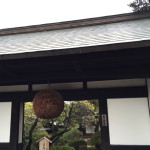Sake can be called rice wine and the process is similar to that of wine. Sake is made by fermenting rice like wine is made of grapes. In terms of brewing process, the major difference between wine and sake is glucose; grapes contain glucose whereas rice does not. During wine brewery process, grapes are fermented by yeast and ethanol is made during the process. Sake requires one more step to convert starch into glucose. For this process, koji mold*, or aspergillus oryzae, plays a very important role. Koji mold creates various enzymes which convert starch into glucose and these enzymes define the taste of sake. Technically it is very delicate process, therefore, usually sake breweries do not open this process to public. In order to create enough enzymes, koji mold is added on steamed rice and temperature is controlled under sake masters for 48 to 60 hours. After cultivating enzymes by the koji mold, it is added to new steamed rice, water and yeast. Here, two types of fermenting are in progress at the same time to make sake.
In summary, starch of rice is converted into glucose by the function of koji mold and then glucose is fermented by yeast which creates ethanol as a result of fermentation process. And making good enzymes by koji mold is a key to define the taste of sake.
*Koji mold is endemic in Japan and function to convert starch into glucose or protein into amino acid.
Became interested in sake? koi Travel offers you unique sake experiences!
<Related Activities>




